Jumaane Jeffries
- Problem Set #1
|
Part 1
|
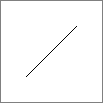 p1.dbn p1.dbn |
// PS #1-1
line 25 25 75 75
|
| |
Create a program to draw a carefully chosen one line on a paper of your choice.
|
Part 2
|
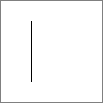 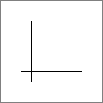 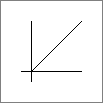 p2.dbn p2.dbn |
// PS #1-2
Set X 30
Line X 20 X 80
Line 20 X 80 X
Line X X 80 80
|
| |
Create a program that uses one variable as a means to control a set of 3 lines. Capture 3 instances of the graphic (A,B,C).
|
Part 3
|
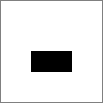 p3.dbn p3.dbn |
// PS #1-3
Repeat A 30 70
{
Line A 30 A 50
}
|
| |
Create a program to draw a single filled rectangle. Again, choose carefully.
|
Part 4
|
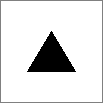 p4.dbn p4.dbn |
// PS #1-4
Repeat A 26 74
{
Line 50 70 A 30
}
|
| |
Create a program to draw a single filled triangle. Use your good judgement.
|
Part 5
|
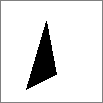 p5.dbn p5.dbn |
// PS #1-5
Repeat A 25 55
{
Line 45 80 A (A / 2)
}
|
| |
Think of all the ways you can draw a filled triangle, and choose one. Utilize the properties of the drawing method you choose, to create a single filled triangle.
|
Part 6
|
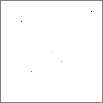 p6.dbn p6.dbn |
// PS #1-6
Set [50 50] 20
Set [60 40] 40
Set [30 30] 60
Set [20 80] 80
Set [90 90] 100
|
| |
Set 5 dots on a paper of your choice. Evoke an emotion with your choice in placement of dots.
|
Part 7
|
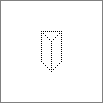 p7.dbn p7.dbn |
// PS #1-7
// Using even spaces for dots
// and counter as a displacement
// increment as well as dot spacing.
Repeat A 0 15
{
Set [40 (40 + (2 * A))] 100
Set [40 (41 + (2 * A))] 0
Set [60 (40 + (2 * A))] 100
Set [60 (41 + (2 * A))] 0
Set [50 (30 + (2 * A))] 100
Set [50 (31 + (2 * A))] 0
}
Repeat A 0 5
{
Set [(40 + (2 * A)) (40 - (2 * A))] 100
Set [(41 + (2 * A)) (39 - (2 * A))] 0
Set [(60 - (2 * A)) (40 - (2 * A))] 100
Set [(59 - (2 * A)) (39 - (2 * A))] 0
Set [(40 + (2 * A)) (70 - (2 * A))] 100
Set [(41 + (2 * A)) (69 - (2 * A))] 0
Set [(60 - (2 * A)) (70 - (2 * A))] 100
Set [(59 - (2 * A)) (69 - (2 * A))] 0
}
Repeat A 0 10
{
Set [(40 + (2 * A)) 70] 100
Set [(41 + (2 * A)) 70] 0
}
|
| |
Create a representational picture (i.e. something that looks like something) using just 8 (at maximum) dotted lines.
|
Part 8
|
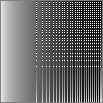 p8.dbn p8.dbn |
// PS #1-8
// Quadratic field stiple
Repeat X 0 100
{
Repeat Y 0 100
{
Set [X ((Y*Y)/100)] Y
Set [((X*X)/100) Y] X
}
}
|
| |
Using a nested loop, fill the entire field with the value of some calculation that can be appreciated. Do not use the Line command.
|
Part 9
|
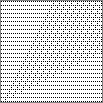 p9.dbn p9.dbn |
// PS #1-9
Repeat A 0 50
{
Repeat B 0 25
{
Set [(A*2) (B*4)] 100
Set [((2*A)+(B*4)) ((2*B)+(A*4))] 100
}
}
|
| |
Using a nested loop, create a stippled pattern of dots that can be enjoyed for its complexity. Do not use the Line command.
|
Part 10
|
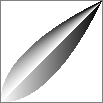 p10.dbn p10.dbn |
// PS #1-10
Repeat A 0 100
{
Pen A
Line A ((A*A)/100) A A
Repeat B 0 100
{
Pen B
Line A A ((B*B)/100) B
}
}
|
| |
Using the Line command, and a (few) nested loop, create an image that evokes a three-dimensional feeling through shading.
|
 p1.dbn
p1.dbn 

 p2.dbn
p2.dbn  p3.dbn
p3.dbn  p4.dbn
p4.dbn  p5.dbn
p5.dbn  p6.dbn
p6.dbn  p7.dbn
p7.dbn  p8.dbn
p8.dbn  p9.dbn
p9.dbn  p10.dbn
p10.dbn